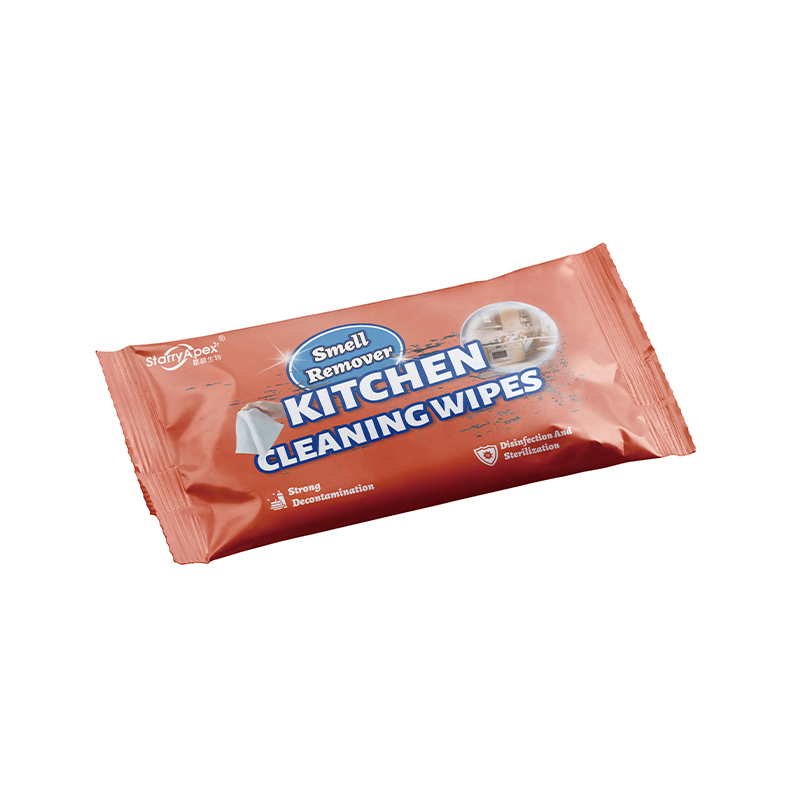In a world increasingly focused on convenience and hygiene, single-use wipes have become a staple in many homes. You likely have a container of them in your kitchen, another in the bathroom, and perhaps a pack in your car or bag. But with so many varieties available, a crucial question arises: are they all the same? The short and critical answer is no. Using the wrong type of wipe for a task can, at best, be ineffective and, at worst, lead to skin irritation or damaged surfaces.
Household Cleaning Wipes: The Surface Sanitizers
Household cleaning wipes are designed for one primary purpose: to clean and disinfect hard, non-porous surfaces. They are the workhorses of your cleaning cabinet, intended for use on countertops, doorknobs, appliance handles, toilet seats, and other similar areas.
Key Characteristics:
- Active Ingredients: These wipes are regulated as antimicrobial pesticides by agencies like the EPA (Environmental Protection Agency) in the United States. Their effectiveness relies on powerful chemicals like quaternary ammonium compounds (“quats”), hydrogen peroxide, or alcohols (like ethanol or isopropyl alcohol) in concentrations typically ranging from 5% to 15%. These agents are designed to kill a broad spectrum of germs, including bacteria and viruses, on surfaces.
- Cleaning Agents: Beyond disinfectants, they contain detergents and surfactants that help lift and remove dirt, grease, and grime from the surface.
- Material: The cloth itself is typically a robust, non-woven material that can withstand scrubbing without tearing. It is often textured to provide light abrasion for better cleaning.
- Important Considerations:
- Dwell Time: For a cleaning wipe to actually disinfect, the surface must remain wet for a specific amount of time, often several minutes. This is known as “dwell time” or “contact time,” and it is clearly stated on the product’s label. Simply wiping and immediately drying the surface will remove dirt but will not achieve full disinfection.
- Skin Contact: The chemicals in these wipes are too harsh for skin. Prolonged or frequent use can lead to dryness, irritation, and dermatitis. It’s always advisable to wear gloves or wash your hands after using them.
- Surface Compatibility: They are not suitable for all surfaces. The chemicals and moisture can damage porous surfaces like unsealed wood, certain types of stone (like marble or granite), and delicate screens.
In summary: Use household cleaning wipes on hard surfaces like countertops and sinks to remove soil and kill germs. Always read the label for dwell time and safety warnings.
Baby Wipes: The Gentle Skin Cleaners
Baby wipes are formulated with a singular focus: gentle and effective cleaning of a baby’s sensitive skin, particularly during diaper changes. Their design philosophy is the polar opposite of that for household wipes.
Key Characteristics:
- Ingredients: The number one priority is mildness. Their formulation is often pH-balanced to match human skin. They primarily consist of water (often 95% or more), along with mild skin-conditioning agents like aloe vera, vitamin E, or chamomile. They may contain gentle moisturizers like glycerin to prevent dryness and avoid alcohol, which is drying and irritating.
- Material: Baby wipes are made from an exceptionally soft, pliable, and sometimes quilted material to be gentle on delicate skin.
- Cleaning Power: While effective for their intended purpose, they lack the strong detergents and disinfectants found in household wipes. They are designed to clean skin, not to sanitize surfaces.
- Important Considerations:
- Not for Disinfection: Because they lack powerful antimicrobial agents, using a baby wipe to clean a kitchen countertop will spread germs around rather than kill them. It removes visible debris but does not sanitize.
- Potential for Residue: The moisturizing ingredients that are beneficial for skin can leave a sticky or oily residue on hard surfaces, attracting more dirt and dust.
- Flushability Claims: Even wipes marketed as “flushable” can cause significant plumbing blockages and problems for municipal sewer systems. It is always best to dispose of them in the trash.
In summary: Baby wipes are designed exclusively for gentle cleansing of sensitive skin. They are not a substitute for surface cleaners or hand sanitizers.

Hand Sanitizing Wipes: The On-the-Go Germ Killers
Hand sanitizing wipes occupy a middle ground. They are intended for use on skin, like baby wipes, but their goal is to kill germs, like household wipes. They are regulated as over-the-counter drugs by the FDA (Food and Drug Administration) in the U.S.
Key Characteristics:
- Active Ingredient: The key component is almost always alcohol (ethyl alcohol or isopropyl alcohol), and it is present in a high concentration—typically between 60% and 70%—which is the level deemed necessary by health authorities to effectively kill most common pathogens on hands.
- Other Ingredients: They contain minimal additives. There might be a small amount of glycerin to counteract the drying effects of the alcohol and sometimes a mild fragrance.
- Material: The cloth is typically a simple, non-woven material designed to hold and distribute the sanitizing solution efficiently.
- Important Considerations:
- Effectiveness: They are highly effective at killing germs on hands when soap and water are not available. However, they are not designed to clean visibly dirty or greasy hands, as the dirt can shield germs from the alcohol.
- Skin Drying: The high alcohol content can be very drying to the skin with frequent use.
- Not for General Surfaces: While they will disinfect a surface, they lack the detergents to clean it. Using one on a dirty countertop will just smear the dirt. They are also a more expensive option for cleaning large surfaces.
In summary: Hand sanitizing wipes are a portable solution for disinfecting clean hands. They are not for cleaning dirty surfaces or for gentle, routine skin cleansing.
A Quick-Reference Comparison Table
| Feature | Household Cleaning Wipes | Baby Wipes | Hand Sanitizing Wipes |
| Primary Purpose | Clean & disinfect hard surfaces | Gently clean sensitive skin | Sanitize (kill germs on) hands |
| Key Ingredients | “Quats,” hydrogen peroxide, detergents | Water, aloe, glycerin, mild surfactants | Alcohol (60-70%), glycerin |
| Regulating Body | EPA (as pesticide) | FDA (as cosmetic) | FDA (as drug) |
| Material | Durable, often textured cloth | Very soft, pliable cloth | Standard non-woven cloth |
| Safe for Skin? | No, can cause irritation | Yes, designed for sensitive skin | Yes, but can be drying |
| Effective on Germs? | Yes, on surfaces (with dwell time) | No | Yes, on clean hands |
| Cleans Dirt/Grease? | Yes, contains detergents | Mildly, for skin | No |
Conclusion: The Right Tool for the Right Job
While all three types of wipes offer convenience, they are specialized tools with distinct roles. Using them interchangeably can lead to poor results and potential risks.
- For kitchen counters, bathroom sinks, and doorknobs, reach for household cleaning wipes.
- For diaper changes or cleaning a child’s face and hands, trust the gentle formulation of baby wipes.
- For quickly disinfecting your hands after touching a shopping cart or before a snack on the go, rely on hand sanitizing wipes.
By understanding the differences and respecting the specific design of each product, you can use them effectively and safely, ensuring your home is clean and your family is protected without unintended side effects. Always remember to read the product label—it contains the most authoritative information on how to use the wipe correctly and safely.


 English
English 日本語
日本語 Español
Español عربى
عربى Deutsch
Deutsch Français
Français Baby Wipes
Baby Wipes Industrial & Automotive Wipes
Industrial & Automotive Wipes Biodegradable Wipes
Biodegradable Wipes Cotton Buds and Pads
Cotton Buds and Pads

